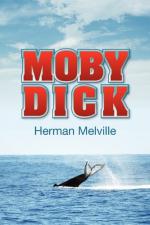In connexion with this appellative of “Whalebone whales,” it is of great importance to mention, that however such a nomenclature may be convenient in facilitating allusions to some kind of whales, yet it is in vain to attempt a clear classification of the Leviathan, founded upon either his baleen, or hump, or fin, or teeth; notwithstanding that those marked parts or features very obviously seem better adapted to afford the basis for a regular system of Cetology than any other detached bodily distinctions, which the whale, in his kinds, presents. How then? The baleen, hump, back-fin, and teeth; these are things whose peculiarities are indiscriminately dispersed among all sorts of whales, without any regard to what may be the nature of their structure in other and more essential particulars. Thus, the sperm whale and the humpbacked whale, each has a hump; but there the similitude ceases. Then this same humpbacked whale and the Greenland whale, each of these has baleen; but there again the similitude ceases. And it is just the same with the other parts above mentioned. In various sorts of whales, they form such irregular combinations; or, in the case of any one of them detached, such an irregular isolation; as utterly to defy all general methodization formed upon such a basis. On this rock every one of the whale-naturalists has split.
But it may possibly be conceived that, in the internal parts of the whale, in his anatomy—there, at least, we shall be able to hit the right classification. Nay; what thing, for example, is there in the Greenland whale’s anatomy more striking than his baleen? Yet we have seen that by his baleen it is impossible correctly to classify the Greenland whale. And if you descend into the bowels of the various leviathans, why there you will not find distinctions a fiftieth part as available to the systematizer as those external ones already enumerated. What then remains? nothing but to take hold of the whales bodily, in their entire liberal volume, and boldly sort them that way. And this is the Bibliographical system here adopted; and it is the only one that can possibly succeed, for it alone is practicable. To proceed.
Book I. (Folio) chapter IV. (Hump Back).—This whale is often seen on the northern American coast. He has been frequently captured there, and towed into harbor. He has a great pack on him like a peddler; or you might call him the Elephant and Castle whale. At any rate, the popular name for him does not sufficiently distinguish him, since the sperm whale also has a hump though a smaller one. His oil is not very valuable. He has baleen. He is the most gamesome and light-hearted of all the whales, making more gay foam and white water generally than any other of them.




